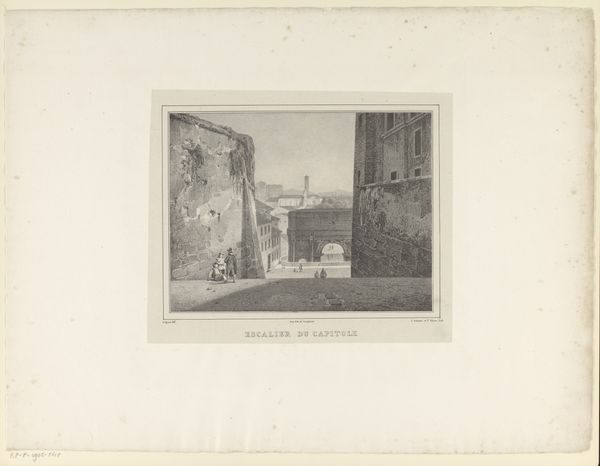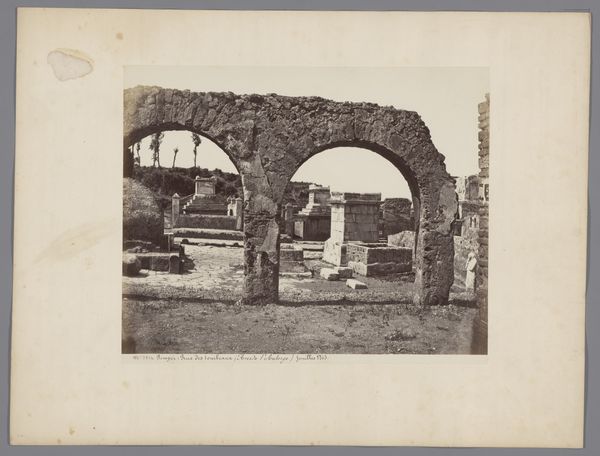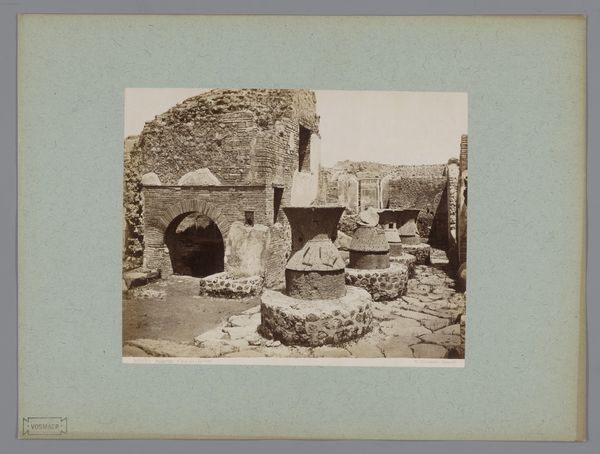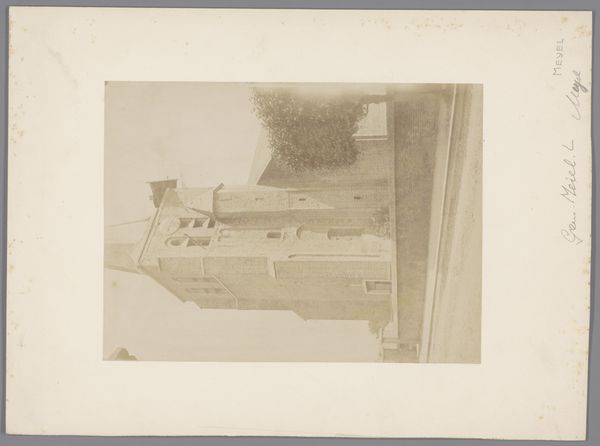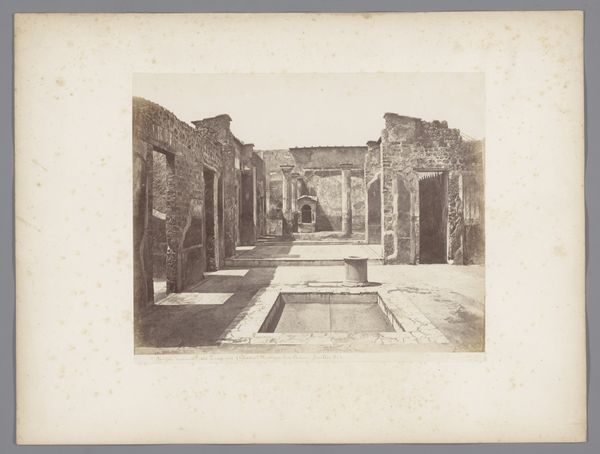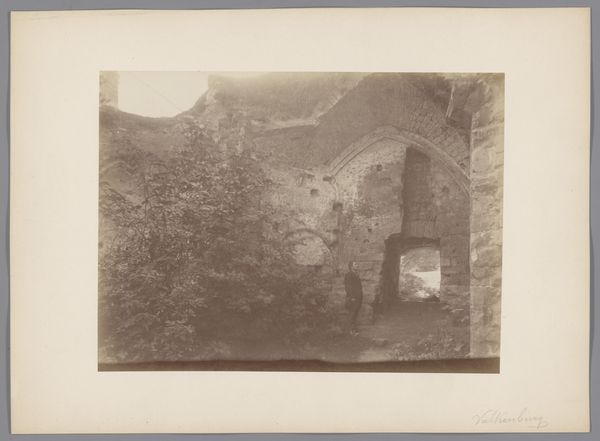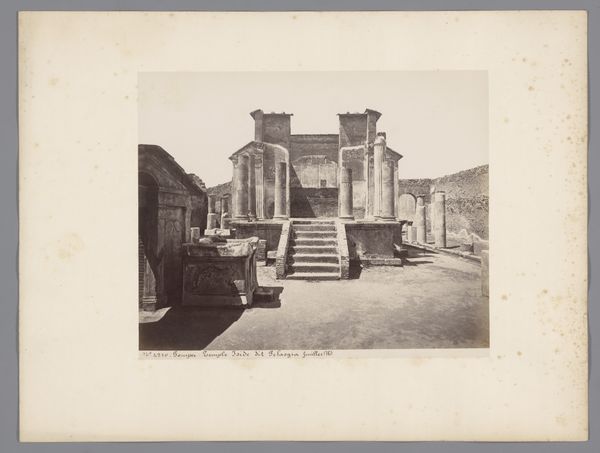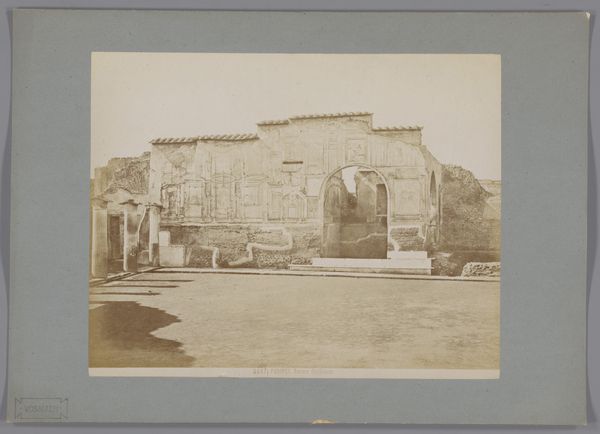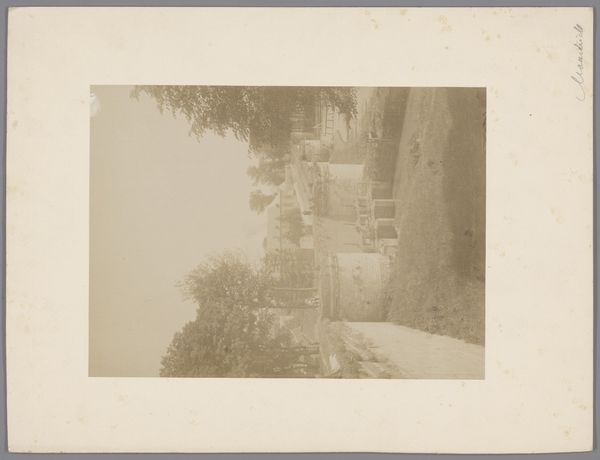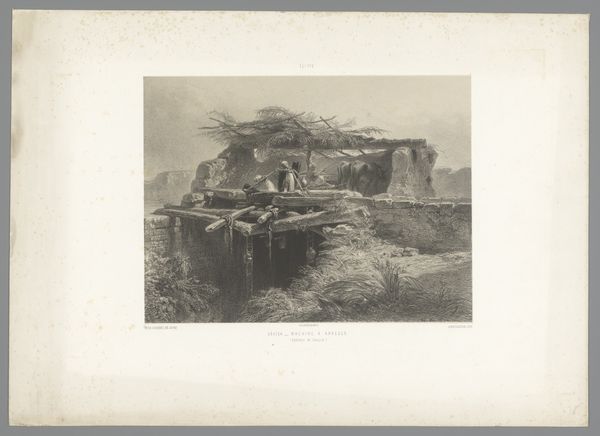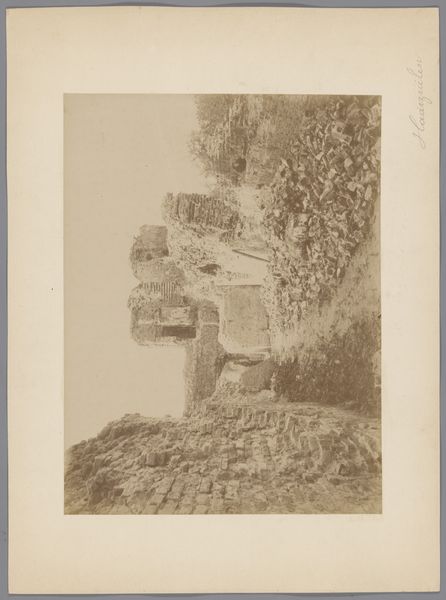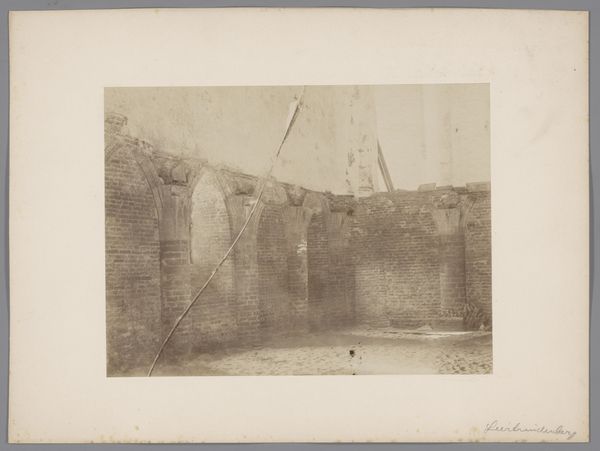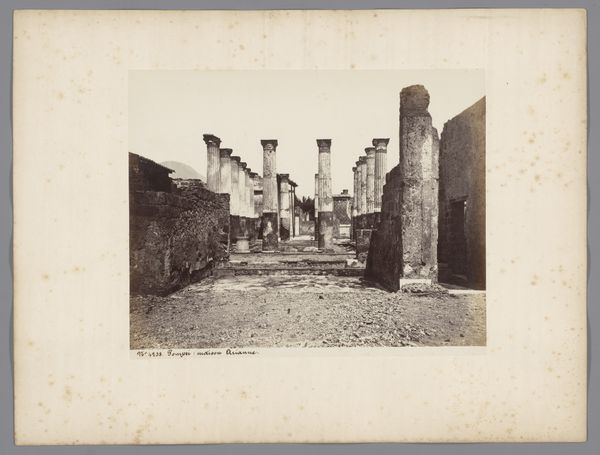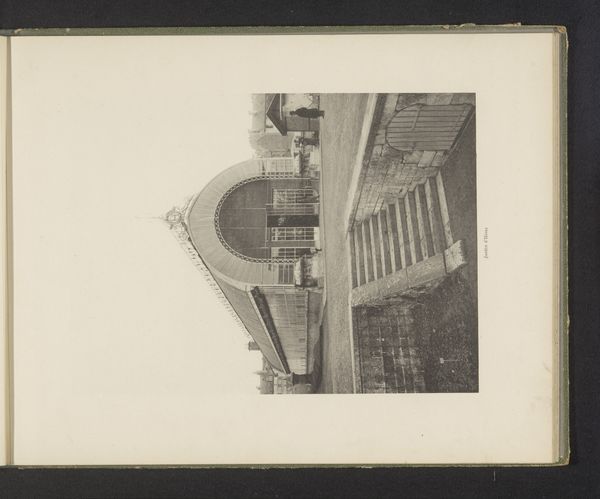
Dimensions: height 105 mm, width 153 mm, height 186 mm, width 235 mm
Copyright: Rijks Museum: Open Domain
Editor: So this is Giorgio Sommer's gelatin silver print, "Restanten van Teatro Tragico te Pompeï," taken sometime between 1857 and 1914. It depicts the ruins of the tragic theater in Pompeii. It's incredibly evocative; you can almost feel the weight of history in the stones. What jumps out to you when you look at it? Curator: What strikes me is the relationship between the labor involved in constructing this theater initially and the photographic labor involved in its documentation. Sommer, with his process, isn't simply recording a ruin. He's actively engaging in the cultural consumption of the site. Consider the materials used to build the theater, sourced locally and transported. What narratives can be revealed by studying the labor involved in the entire process? Editor: That's a great point. I was thinking more about the romantic aesthetic. The ruin almost looks picturesque... Curator: But how did it become a ruin? It wasn’t just time but also seismic events. We see evidence of not just collapse but extraction - what materials were reclaimed and reused elsewhere after the earthquake? These choices shaped the materiality of this photograph, right? It’s a specific type of consumption that creates this picturesque quality you observed, but also signifies a continuous cycle of material repurposing. Editor: So you’re saying the aesthetic beauty is intertwined with material history and repurposing... I hadn't thought of it that way. Curator: Precisely. It challenges the boundaries of "art" by reminding us that the act of making—and unmaking—is continuous, shaped by both intention and environmental forces. Sommer's documentation participates in this process by reframing the physical reality. Editor: I see. It’s all connected, from the ancient Roman builders to Sommer and even us, interpreting it today. Curator: Exactly. Hopefully, understanding these material processes help you in examining your world!
Comments
No comments
Be the first to comment and join the conversation on the ultimate creative platform.
